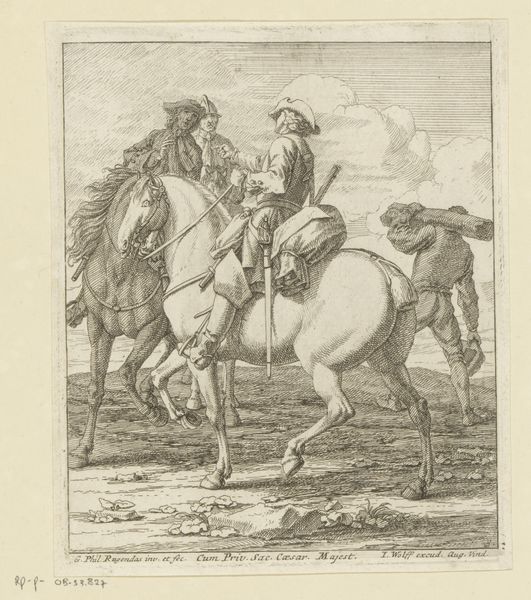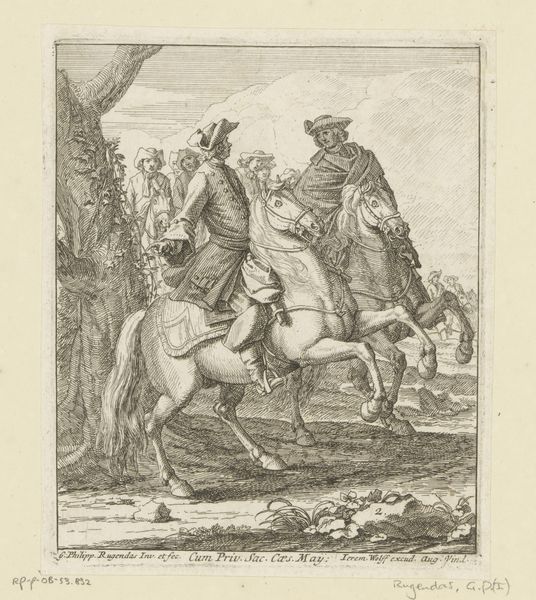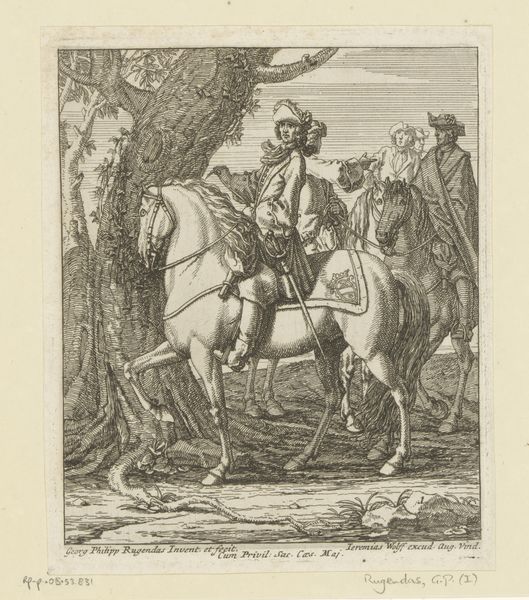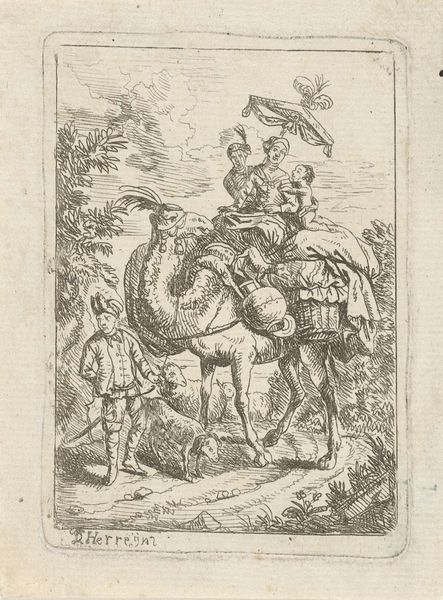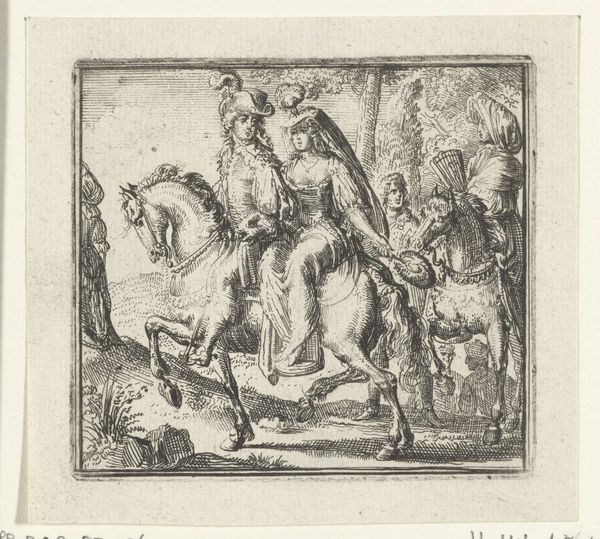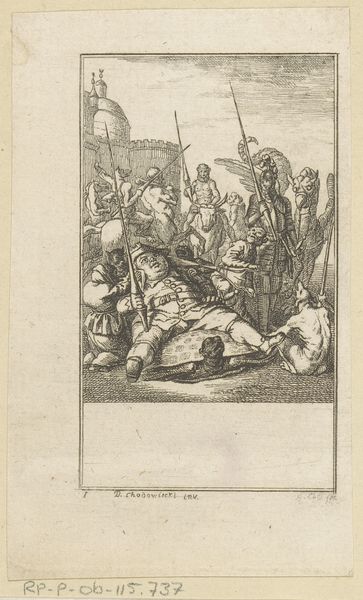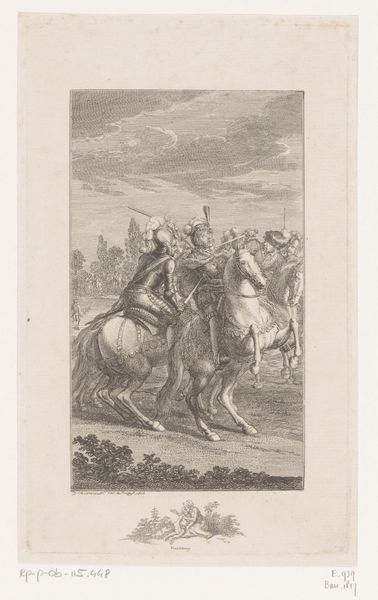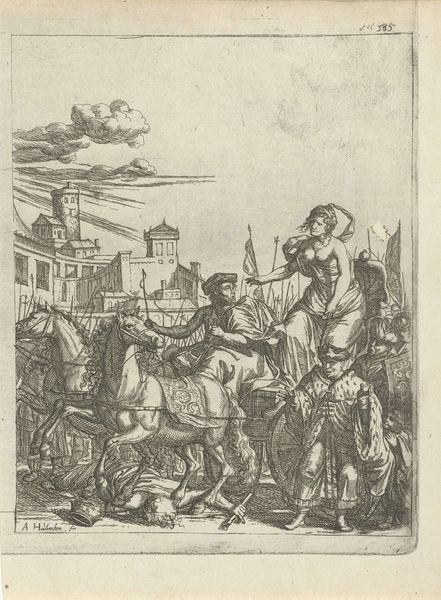
Dimensions: height 109 mm, width 61 mm
Copyright: Rijks Museum: Open Domain
Editor: Here we have Louis Wilhelm Chodowiecki’s "Astolfo wordt terechtgewezen," an engraving dating back to the early 1770s. I’m struck by the stiffness of the figures. Everyone looks so serious and formally posed. How do you interpret this work? Curator: Considering the period, the work presents a critical lens on the performative aspects of power. The figures, adorned in armor and elaborate clothing, seem weighed down by their status, which highlights the constraints placed on individuals by social hierarchies. Who truly benefits from such rigid displays? Editor: That's a great point. I was so focused on the aesthetic, I hadn’t considered the social commentary. The fallen lances at the center imply a dispute. Does this point to an intended reading of critique in this image? Curator: Precisely. The discarded lances, symbolic of broken or surrendered power, disrupt any narrative of seamless authority. The setting itself—is it natural or artificial? How does this contribute to the understanding of the period as the "age of reason?" Editor: So, the very deliberate composition, with its attention to detail, invites a viewer to question the apparent order. It highlights the tension between the Enlightenment ideals and the lived experience of inequality? Curator: Precisely! By looking at this image through a contemporary lens, we can question not just the historical narrative but also the present, continually asking: who gets to be represented, and how? Editor: I hadn’t considered its relationship to Enlightenment ideals before; it brings a new complexity to what seems like a straightforward historical depiction. Curator: And that, is precisely the power of historical artworks; to inspire endless contemporary investigation into our cultural and social beliefs!
Comments
No comments
Be the first to comment and join the conversation on the ultimate creative platform.



